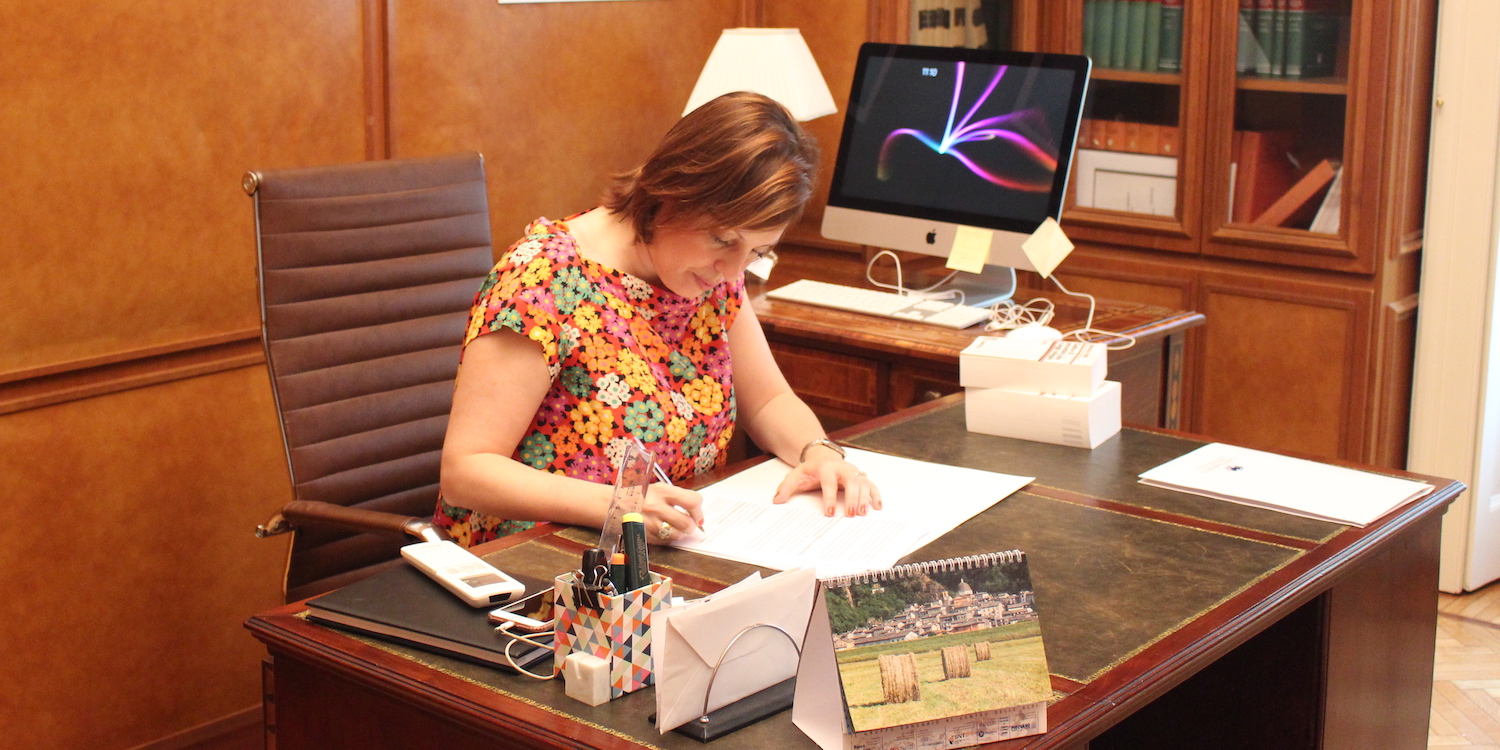
Attorney at lean
CASE STUDY – A boutique law firm in Milan has initiated a lean transformation to turn around its processes, improve service to its clients and make life easier for the team.
Words: Eulalia Malimpensa, Attorney at Law and Founder, Studio Legale Malimpensa – Milan, Italy
One morning in 2018, around Christmas time, my daughter came up to me and told me that she had asked Santa Claus to “help mommy work less.” This was eye-opening for me, but for a long time I struggled to find a way to better manage the deadlines and workload in my law firm.
I remember a particularly challenging deed that kept me awake for three days straight, for which I filed two minutes before the midnight deadline. That night, I promised myself: “Never again.” I knew I had to do something to improve my quality of life.
My husband suggested I talked to Sergio Ferigo, the CEO of FPZ, a manufacturing company that my law firm has been supporting for some time (Planet Lean has recently published two articles on them - here and here). For the past 10 years, Sergio has been working with lean thinking to completely reorganize his company, which resulted in a great work-life balance for him and his team.
I knew of lean myself because I have been assisting FPZ quite a long time. I have recently worked on an internal code of procedures for them that aims to seamlessly integrate the lean system Sergio has implemented with the Italian labor law (one of our areas of expertise at Studio Legale Malimpensa), which is very strict and based on a hierarchical vision of the organization. I just didn’t think that this management approach could ever work in a law firm.
I was a bit hesitant at first. On March 8th this year, I discussed the idea of starting a lean transformation with my father, who told me I should do it. He suddenly passed away two days later and, I am not going to lie, that last piece of advice he gave me pushed me to take this leap of faith.
BRINGING LEAN TO A LAW FIRM
I founded my law firm in June 2013. At Studio Legale Malimpensa, we pride ourselves on being a boutique law firm offering high-quality, tailored services to our clients, providing high levels of accuracy and professionalism (which can’t be taken for granted, neither in famous international law firms nor in well-known Italian ones).
We work really hard to give our clients the best legal advice and representation, and we are very committed to what we do. The world is full of good lawyers and I think that what ultimately sets you apart is your ability to create relationships with people and to take care of the work.

Having said that, we knew our processes needed improving and we thought that lean thinking could perhaps be the way to become more efficient at tackling the huge workload we face on a regular basis. That’s why we started working with Matteo Consagra of the Istituto Lean Management (pictured here on the right).
The main problems we experienced in our law firm were:
- Delays: it is hard to give clients the quick answers they expect without marking their file “urgent” and moving it to the top of the list (to the detriment of other clients). Of course, speeding up a job doesn’t mean we cut corners when it comes to quality.
- The funnel effect: because a lot of our work – from legal advice to deeds – has to go through me for final approval (especially when professional liability is involved), the team often found themselves waiting for my go-ahead. We had a lot of work-in-progress (WIP). This problem is often compounded by the fact that your writing style and the structure of the documents you produce is like your signature and I am striving to get my associates to get as close as they can to this house style (which for now means I have to review a lot of the documents we send out).
- Inefficiency at different levels: it was clear we needed a better way of doing things, in order to prevent us from having to rush all the time and to better serve our clients.
We started our work with lean around six months ago. We have only just begun, but we have already begun to see some progress in terms of efficiency. From the very beginning, it was clear that lean thinking could really help us to optimize our processes: even the simplest of things, like avoiding interruptions, has made my life much easier and allowed me to quickly work through my backlog.
The first thing we did was using post-it notes to map our current state – both the good and the bad. We used the five dimensions of the Lean Transformation Framework to ensure we were analyzing our work as it pertains to the different dimensions that we need to address in order to truly transform our law firm.
We have started to implement a number of changes. For instance, we have now understood the concept of standard and are creating a folder with different ones, so that team members are more autonomous and no longer have to wait for me to, for example, tell them how a certain document should be formatted and what critical information is needed to open a new procedure and set things in motion. We almost can’t believe that, as a result, we have started to finish work on time!
The team also reorganized our archive, something I gave the freedom to do in whatever way suited them (I only suggested we use both Arabic numbers and Roman numbers to distinguish open files from archived ones in a very visual way.)
It’s critical that the law firm continues to function even when I am not around, which is why we have started to use software to help us to run the every-day business and manage things like payments. This makes life much easier for our administrator, who can now take care of the whole invoicing process (there is a rate table she can use, which easily applies if all the activities are recorded).
To ensure we can always stay on top of the work, we have also begun to look into improving the scheduling of activities and the organization of our time. We are working hard at it, but we are still struggling a bit. We will get there, though – I have no doubt.

THE PRINCIPLES GUIDING US
In a small reality like ours, personal relationships are everything. That’s why I spend a lot of time recruiting the right profiles and, especially after lean was introduced at Studio Legale Malimpensa, developing the skills of my team members. I have started to provide them with individual input and feedback that I encourage them to reflect on. I do my best not to give them answers; instead, whenever I detect a weakness or a problem, I ask them questions about it. To me, it’s like planting a seed and hoping it will grow.
I am confident that lean will take us to where we want to go. We have already seen a positive impact on our efficiency and in the organization of our work: we are not rushing through tasks anymore (or, at least, not as much as we used to) and our clients are more satisfied. I still work long days but that, too, is getting better.
The thing I love the most about this approach is that, in my opinion, it will allow to inject my principles and beliefs into the work we do every day. The experience I had in other firms in the past never reflected my values, and it is important to me to ensure they inform the work we do at Studio Legale Malimpensa. Intellectual honesty, transparency, clarity in explaining complicated legal proceedings to people who don’t understand them – all of this comes down to respecting our clients. If that isn’t lean, I don’t know what is.
THE AUTHOR

Read more


OPINION – In a competitive and unpredictable market, the temptation to rely on technology is always strong, but experience proves that there is no better support than people's ability to learn and adapt to new situations.


FEATURE — Lean Thinking is redefining agriculture by turning farms into systems of continuous learning, boosting productivity, reducing waste, and empowering people through daily problem solving.


INTERVIEW – We chat with the CEO of a construction company in Dubai to learn about the competitive advantage that lean thinking is providing them.


INTERVIEW – The extraordinary events of the past year have encouraged lean organizations around the world to ask deeper questions about purpose and value creation, says Josh Howell.

